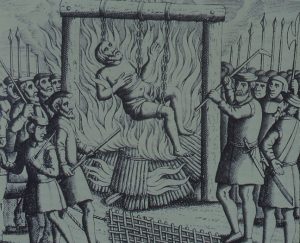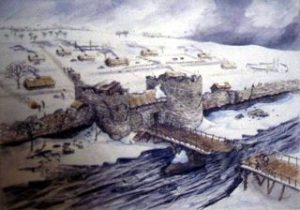The Smithfield Pub Tour takes place at 7.15 pm
 on Saturday, November 30.
on Saturday, November 30.
Meet Kevin just outside the exit of BarbicanTube Stop.
One of the greatest place for London history. Just outside the Roman City Wall and used by the Romans as a cemetary. The “smooth field” became the main live stock market of London, occassional tiltyard and place of public executions. The Peasants’ Rebellion climaxed here. On 23 August 1305 William Wallace (‘Braveheart’) was hanged, drawn and quartered here. Religious martyrs were burnt here and forgers boiled in oil. There are two monasteries which give a great insight into the Reformation, with connections to Thomas More. St Bartholemews hosted Britains’s greatest fair, and provided the oldest hospital in the United Kingdom – the second oldest in Europe. There are more pre-Great Fire buildings than anywhere else in London. There are also the trace of World War 1 bombing and Zeppelin raids. There are street names that sing: Cow Cross Street, Giltspur Street, etc. There are people names that resonate: Ben Franklin, John Milton, Charles Dickens, Arthur Conan Doyle, Rahere, to name but a few. Oh, and did we mention this is where Holmes met Watson and where Benedict Cumberbatch fell off the roof.
This is a London Walks walk given by Kevin Flude

